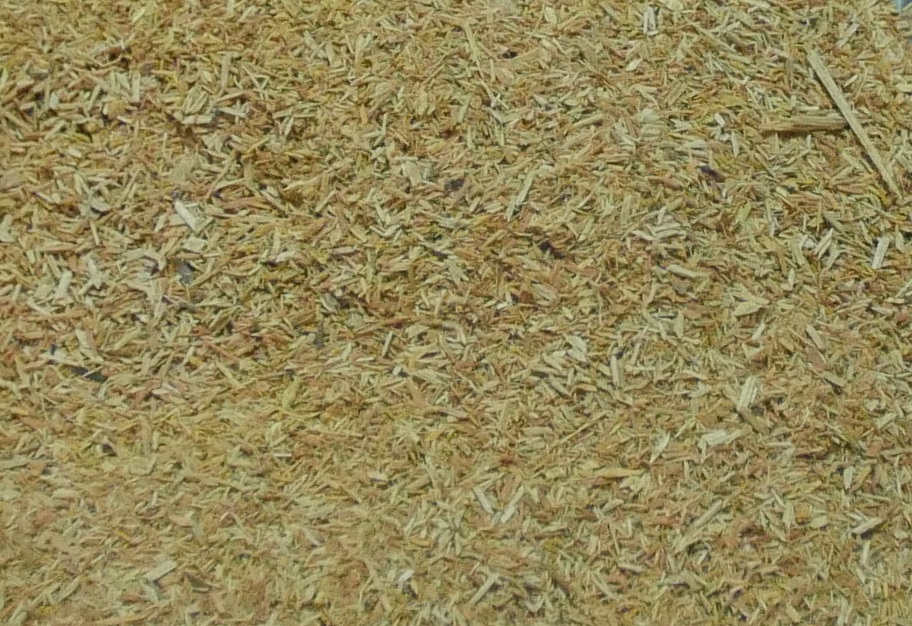Sawdust
Sawdust is a waste product from the timber industry and can be from softwood or hardwood. It has been widely used and is considered a good bedding material in Australia when available. It is sometimes used as a top-dressing in straw-based litter systems.
Characteristics
Variable bulk density with hardwood (300–350 kg/m³) and pine (150–200 kg/m³); small particle size; soft and compressible; low thermal conductivity; high absorbency; generally slower drying rates but greater water holding capacity than shavings due to higher bulk density; moderate to high friability.
Contaminants and pests
Generally free from pests, weed seeds and diseases if stored correctly before use. There is no evidence that it is more susceptible to litter beetle infestations than other bedding material.
Sourcing and pre-treatment
The supply of sawdust material has traditionally been consistent in Queensland, New South Wales, Victoria and Tasmania that have substantial timber industries. In recent years it has become more limited in supply and more expensive in some areas.
One issue with sawdust is that it can be an inconsistent product. Larger particle sizes from timber mills mean that it may need screening/sieving before use. If not removed, excessive numbers of larger particles make it more susceptible to caking. Long, sharp splinters can also cause physical injury to the chickens.
Moisture content on delivery can also be an issue, especially with hardwood. It may require drying before use to prevent caking and chilling chicks, and need additional tilling early in the grow-out cycle. Higher moisture content during storage and transport makes it susceptible to mould.
Ventilation and moisture management
Sawdust (particularly hardwood) can hold significantly more water than shavings and drying times will generally be slower. This may require additional tilling to release excess moisture.
Caking and tilling
As with all bedding materials, mechanical litter conditioning/tilling may be required to address caking if not managed correctly and/or it becomes too wet from chicken manure, outside moisture or extraneous water from broken or poorly maintained infrastructure. If it is a consistent product with limited large particles and low moisture continent, and with its good friability characteristics, it is generally less susceptible to caking than chopped/crushed straws and grasses.
Litter re-use
Along with shavings, it is commonly used in litter re-use practices in Australia. It has been successful, provided adequate pasteurisation and moisture removal are practiced between grow-out cycles. It is sometimes blended with shaving material as part of the re-use practice.
Spent litter management
Useful as a fertiliser under Australian conditions. Being a wood-based product makes it generally free of weed seeds and other pests.
It is less desirable for use in energy generation using anaerobic digestion, as the timber component will not readily digest. However, the manure and wood components will generate energy in combustion processes, provided the moisture content is low.
Content source: https://chicken-meat-extension-agrifutures.com.au/docs/best-practice-litter-management-manual-for-australian-meat-chicken-farms/management-of-common-bedding-materials/sawdust/ Downloads and resources
Best practice litter management manual for Australian chicken meat farms (PDF, 3MB) | online version
Review of fresh litter supply, management and spent litter utilisation (PDF, 3.5MB)
Litter re-use: an evidence-based guide to re-using litter (PDF, 1.3MB)


